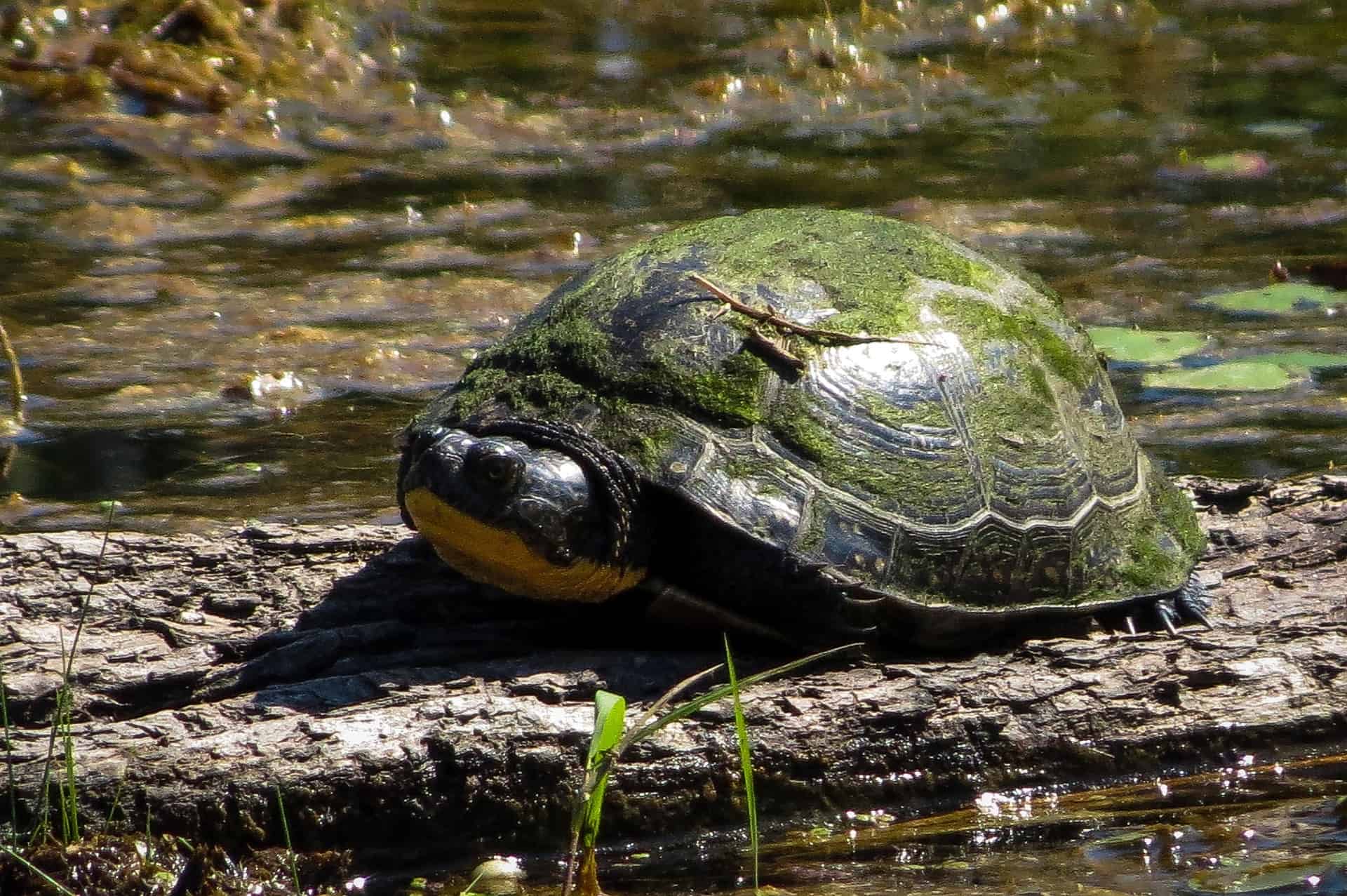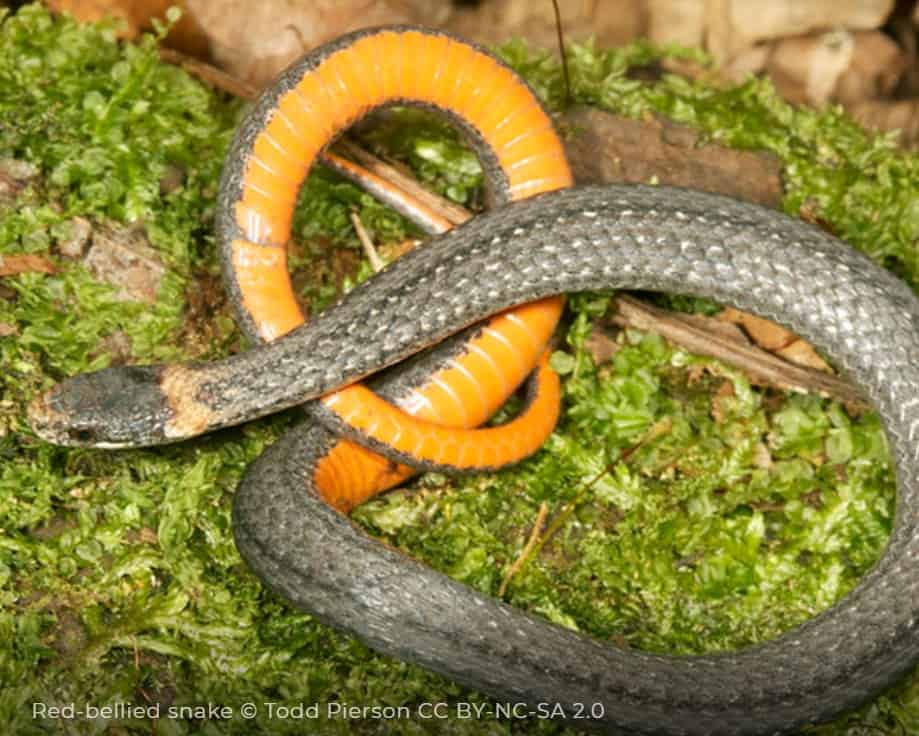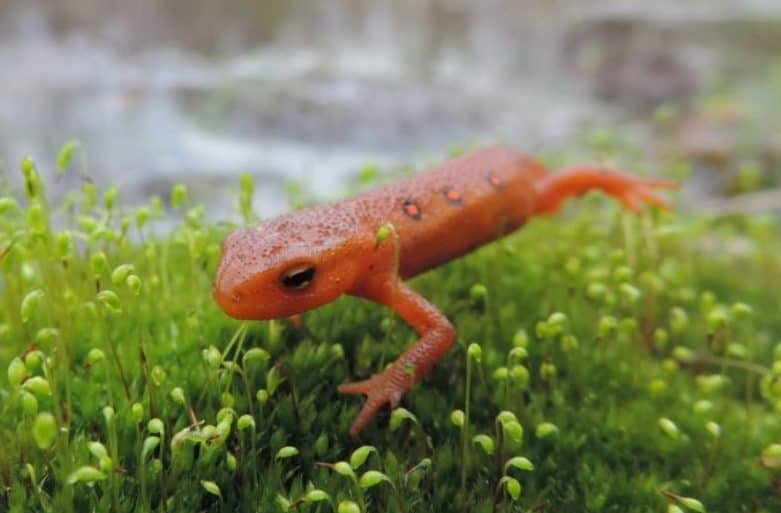The days are warmer, the ground is drier and we’re not the only ones delighted about the vitamin D. Reptiles and amphibians have said goodbye to their winter homes and hello to spring. The Credit River Watershed is home to 29 herpetofauna or “herps”: five turtles, five snakes, seven salamanders, nine frogs and one toad. Here are four species and facts you may newt (not) know about herps in the Credit River Watershed that are totally awesome:
1. There’s nothing bland about the Blanding’s turtle.
Its throat and chin are coloured bright yellow. Its shell is distinctively shaped like an army helmet, which is helpful for identifying it.

While Blanding’s turtles are medium-sized, weighing between one and three pounds, they can lay as many as 21 eggs. It takes between 50 and 75 days for these eggs to hatch but once they do, they’re in for the long hall – they can live up to 80 years old!
2. There’s no confusing the red-bellied snake.
There’s no other snake in Ontario with a red belly. However, if it’s on the go, it could be difficult to identify if you can’t see its belly. Lucky for us, another way to identify them is by the three light spots on the neck, which may join to form a partial ring. They will threaten potential predators by exposing its bright red belly or flattening itself and curling the edges of its mouth outward.

Red-bellied snakes are good for the garden. They help to control populations of garden pests like slugs, earthworms, snails and grubs.
3. Northern leopard frogs have an appetite the size of a leopard.
The northern leopard frog’s markings resemble a leopard’s coat. They also have similar appetites. Leopard frogs are carnivores and will eat just about anything they can fit in their mouths. They eat beetles, ants, flies, worms, smaller frogs, including their own species, and even birds, and garter snakes.

4. Red-spotted newt have a complex life cycle.
The life cycle of a red-spotted newt is one of the most complex of all the salamanders. It starts in a pond as an egg, hatches into an aquatic larvae with external gills. Once it becomes a juvenile, it moves to land. Its gills are replaced with lungs. It will then morph again and return a few years later to water as adults but keep its lungs.

The red-spotted newt secretes unpleasant toxins on its skin to defend against predators, and the bright red coloration serves as a warning.
These reptiles and amphibians may be small, but they are an important part of the big picture. Finding these species can tell us about the overall health of a waterbody and the surrounding environment.
Do you have your own photos of reptiles and amphibians in the Credit River Watershed? Share them with us on Instagram, Twitter and Facebook!
By CVC’s Kimberley Laird, Associate, Marketing and Communications







